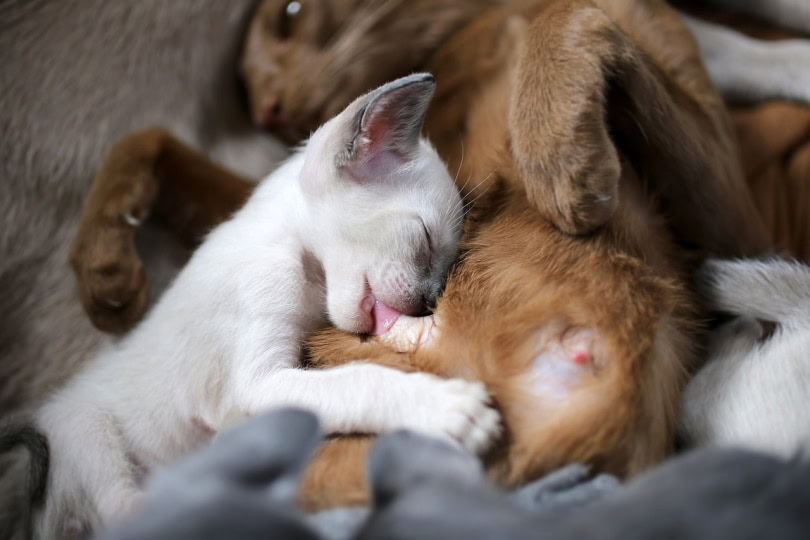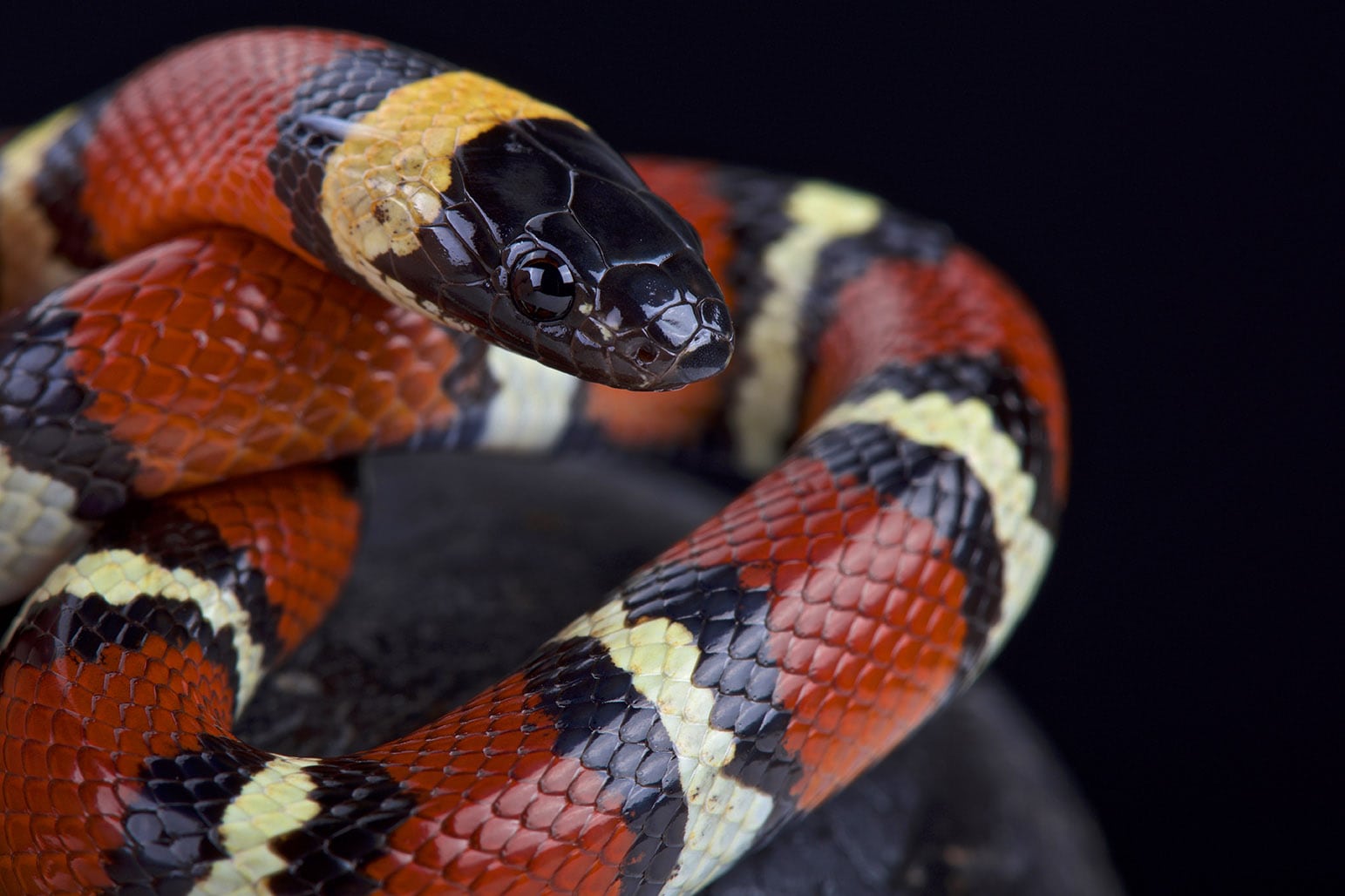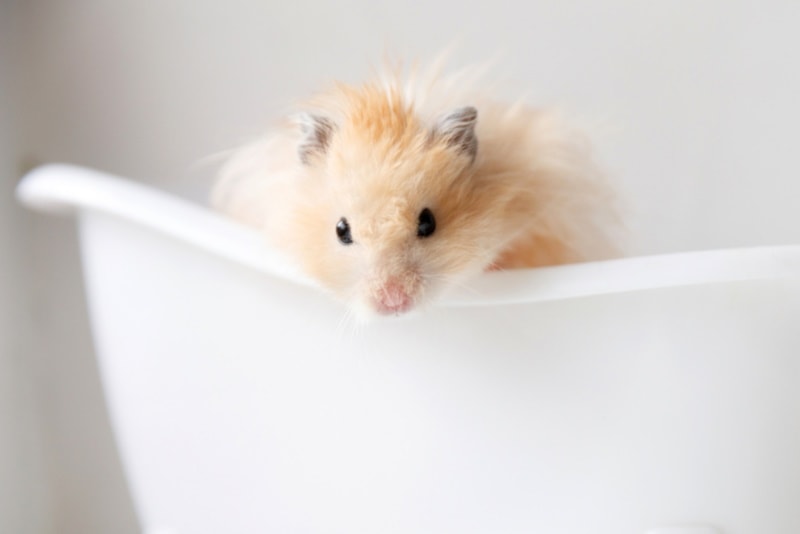VET APPROVED

The information is current and up-to-date in accordance with the latest veterinarian research.
Learn more »Click to Skip Ahead
There are many special occasions in one’s life, and being present for the birth of any creature is truly amazing.
Unspayed females can go into heat approximately every 2–3 weeks during their breeding season. They are also fertile for most of their life. Female cats have their first season as early as 4–5 months old and do not have a menopause. Intact outdoor cats or those indoors that live with an unfixed male can get pregnant quite easily. A cat pregnancy lasts 63 days, and if you’re not vigilant, you might miss the signs until your cat is almost due to have kittens. Most cat pregnancies are relatively straightforward.
If your feline is about to have kittens, try to set aside some time to prepare yourself and her in order to take care of your new family.

Signs: What to Look For
Cats are highly protective of their young and may even try to hide being pregnant from you! Usually, during the first few weeks you may not notice anything, but if you spot any of the following signs and want to be prepared, then take her to your vet as soon as you can.
This is a list of the main signs of pregnancy, although keep in mind that every cat is different and may display some or any mixture of these signs:
- The first visible sign, potentially after 15–18 days, is your cats’ nipples becoming redder or pinker. This is known as “pinking-up”, and it is mother nature preparing your kitty to provide milk for her young. The nipples may enlarge also and be far more noticeable than before.
- If your cat stops coming into heat, that may mean that she has become pregnant.
- There might be some mild appetite changes, typically your mom-to-be may enjoy an intake of more food to ensure her little ones receive all the nutrients they need.
- As mammals, cats may experience a type of “morning sickness” which involves vomiting and nausea. It can occur around halfway through the pregnancy, while some vomiting may be normal, it’s better to call your vet if this occurs to make sure there are no other health issues.
- The maternal instinct will kick in with your feline and she may show lots more affection, purr more, and even spend more time at home (and less time hunting mice).
- Coupled with the mom-to-be instinct is the urge to nest or find a safe place. If you suspect she is pregnant, then provide a quiet, comfortable space in a room for her to prepare for her babies.
- Last but not least is the visible weight gain that your cat will have. She may gain up to 4 pounds, depending on the breed and age, and provide a steady supply of food when you are sure she is expecting.
- As the gestation period continues, towards the last third of the pregnancy, your cat’s abdomen will be visibly enlarged, and like us humans, she will have a kitten bump!
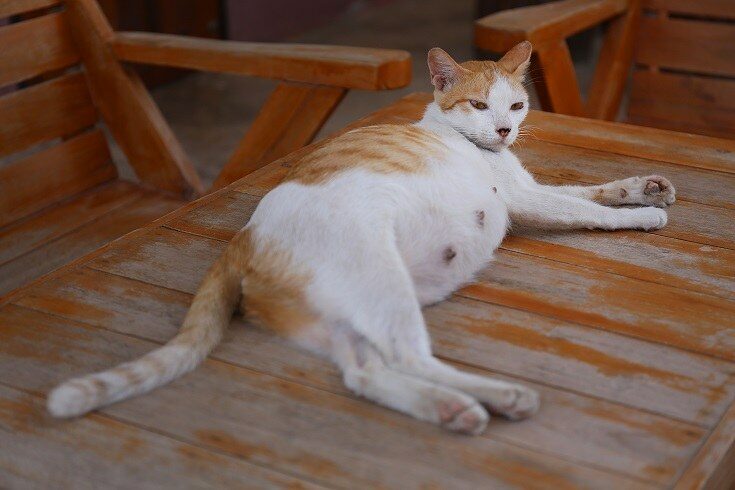
How to Know That Today is The Day?
So, how long does it take for a cat to give birth? Mammals have varying pregnancy gestation timelines depending on the species. A cat’s gestation period lasts between 60 and 65 days. It is interesting to note that female cats are seasonal polyestrous, which means they have multiple reproductive, or estrus cycles during the reproductive season. In the northern hemisphere, this occurs approximately from February to October, when there is more daylight
There are a few ways that you can have a more accurate timeline of your cat’s pregnancy, especially if you want to be certain that she is about to have offspring. Medical imaging using either ultrasound or X-ray will be able to confirm a pregnancy painlessly. Ultrasounds can identify kitten fetuses in your cat’s womb from the fourth week, and can detect if they have a heartbeat beat but it is not an accurate way to count the number.
After about 6 weeks, an X-ray can image the kitten skeletons and therefore provide the exact number of kittens to expect. Your vet may also palpate your feline’s tummy to detect a pregnancy, but this is not typically considered a reliable or safe method.
The cat pregnancy timeline is fascinating and each week the fetuses develop in different ways that coincide with changes to their mother’s behavior or anatomy. There are plenty of online cat pregnancy calculators to check out if you are not that into the old-fashioned methods. Here are some key developments to look out for:
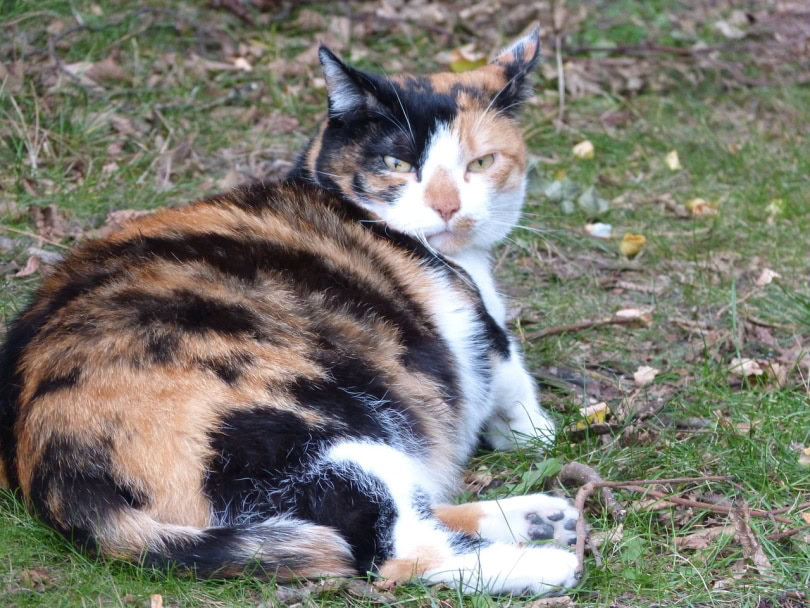
- Week 1: The first stage is when the female cat’s eggs are fertilized by the male sperm. The eggs are then safely placed in the female’s uterus so development can begin. If you notice your cat mating, make a note so that you can be more precise with the due date.
- Week 2: The embryos develop in the uterus while the placenta forms.
- Week 3: This is a big week! The little kittens begin to form, and they grow organs, including a heart, and tiny legs. This is the time of “pinking up”, and an ultrasound scan can confirm the pregnancy.
- Week 4: At this stage, the word fetus can be used for the tiny creatures growing inside your feline’s tummy. The mother cat may lack an appetite during the fourth week due to morning sickness.
- Week 5: At this stage, the mother’s abdomen begins to get larger, and she may be hungrier
- Week 6: Kittens’ skeletons are starting to ossify. They may also start moving.
- Week 7: This week, the mother may start “nesting”. An X-ray at this stage will show with accuracy how many babies there are.
- Week 8: This is the week when the mother comes first! She might start getting ready for the big day and may be clingy and needy so keep her clean as she may find grooming tiring and provide plenty of fresh water, food, and comfort. If your cat is disappearing a lot, it may be that she is choosing to give birth alone. This is nothing to worry about and in fact, if she is in a safe place, it may be even calmer for her.
- Week 9: Get ready, your cat could go into labor at any time! Have your vet’s and emergency clinic phone numbers in hand in case any issues arise. Darkness and quietness should be provided in a space in your home. Tell your family to keep the noise down and be there for your queen mother. If you can check her temperature and it has dropped by about 1 degree, then you know the time has come and labor is imminent.
How to Be There for Your Pregnant Cat
During a cat’s pregnancy, your queen will have certain needs that need to be met. First, a vet will need to confirm pregnancy and the health situation of each baby, and your cat will require flea and worm medication. Her nutritional requirements are different towards the last third of her pregnancy, needing kitten food and adjusting her portion. Also, make sure that you help her build her nest by providing blankets, soft toys, or teddy bears, and a good dose of love.
As the big day approaches, have a warm water bottle, clean towels, and a kitten milk replacement on hand so there is no last-minute rushing. Being a good cat midwife is always about tuning in to your cat’s needs and being as present as you can!
See also:
Featured Image Credit: TaniaVdB, Pixabay
